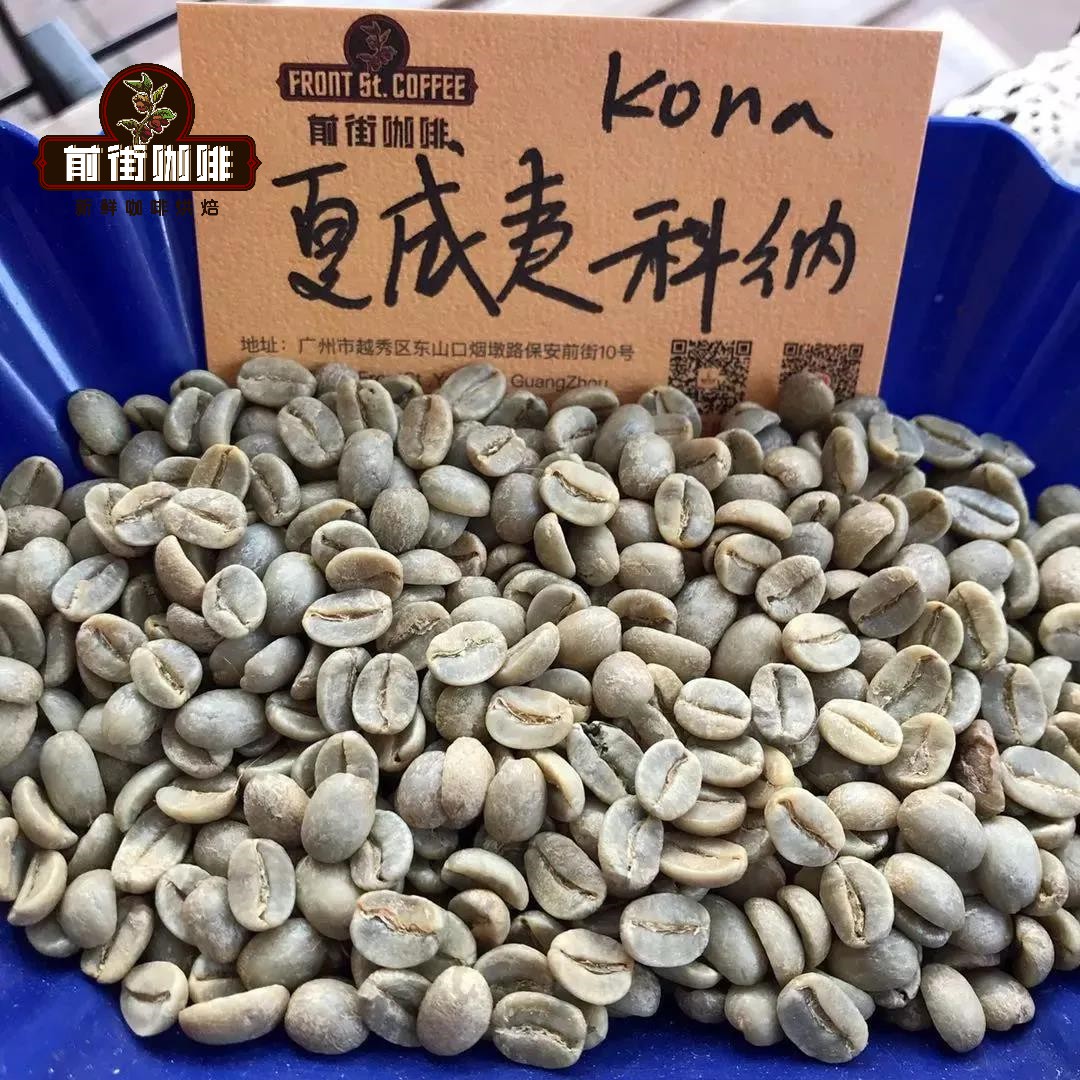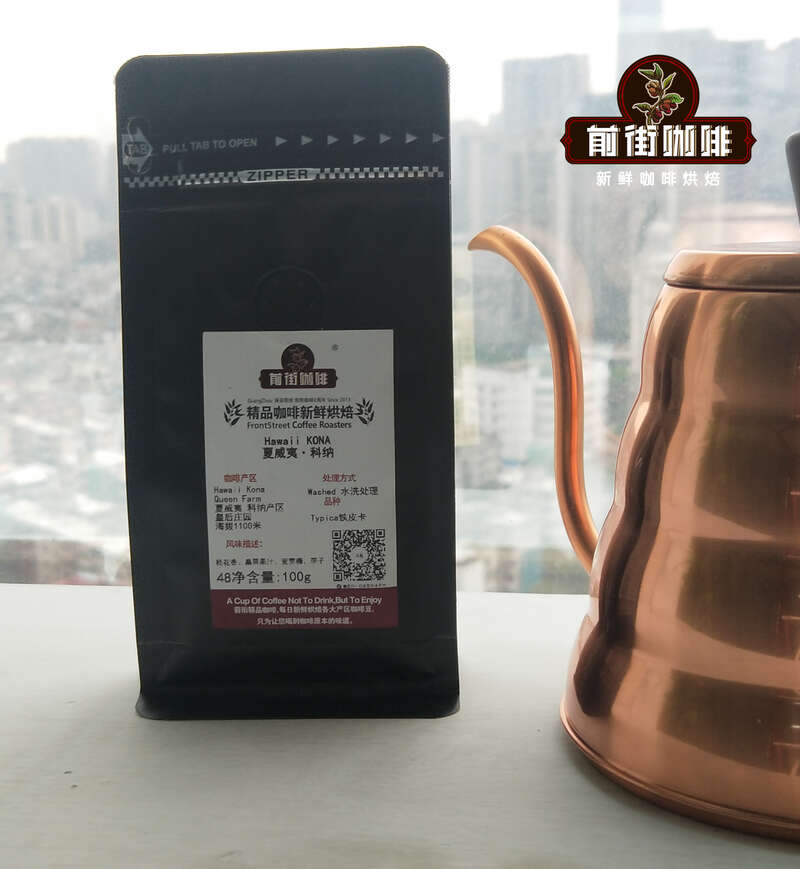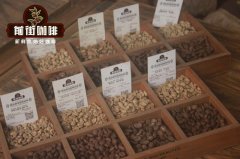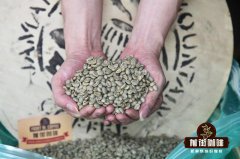How do you get coffee beans from Hawaii?
Hawaii KONA
Country of origin: Hawaii
Treatment method: wet planing method
Variety: iron pickup
Altitude: 800m-1100m
Baking degree: medium and deep baking
It is recommended that the gram weight of hand-brewed coffee recommended by SCA should be 15g coffee powder 90 degrees to 91 degrees hot water 225ml and the ratio of water to powder at 1:15.
The coffee beans used in Kona coffee from Hawaii are grown on volcanic terrain. At the same time, there is a high density of artificial cultivation of agriculture.
Therefore, each bean can be said to be spoiled, the price is naturally expensive, second only to the Blue Mountain in price. Hawaiian Kona beans are evenly shaped and have a strong sour and sweet taste.
The palate is moist and smooth. Moderate baking in Qianjie makes the beans sour, while deep baking aggravates both bitterness and mellow taste.
This coffee bean grows from sea level to 6000 feet. Gourmet coffee usually grows only in the mountains.
Growing at a height of about 4000-6000 feet requires annual rainfall of about 80 feet and the need for dry and wet seasons is very obvious.
The soil for growing gourmet coffee beans requires very fertile soil, and usually volcanic rock, light cloudy or cloudy weather is also necessary in the growth environment of high-quality coffee beans.
The daytime temperature needs 15-20 ℃. This climate results in a longer growth process, a unique growth and climatic environment that leads to a stronger coffee flavor.
Coffee bean flavor is very balanced, walnut, caramel, berry, Brin, plum, nut, cream, the whole is relatively clean and rich.

Hawaii is mainly water washing. The biggest difference from the sun method is the use of fermentation to remove the pectin layer. After completing the fermentation and removing the pectin
As fermentation bacteria and impurities will remain on the coffee beans, the coffee beans will be cleaned again. In order to clean up
This step will consume a lot of water, and then the fruit will be dried and shelled. Hawaii's clean and sweet mountain spring water provides the ideal conditions for washing.
This method creates the bright and clear appearance and pure and fresh taste of Kona coffee beans. The washed coffee beans are placed on a huge plate and dried naturally by the sun.

The missionary Lagers first introduced the bourbon species from Brazil in 1828 and Tibica from Guatemala in 1892. Farmers found that Tibica was more adapted to the soil and water of Kona, so they changed to Tibica in Guatemala and gradually evolved into the famous variety Kona today.
Although the Kona producing area is not high above sea level, the sour taste is cleaner and more elegant than the coffee in the general low altitude area. This is because Hawaii, located in the subtropics between 19 and 20 degrees north latitude, is cooler, and the lowest temperature in winter is above 12 degrees Celsius, so it does not frost. The dark volcanic ash soil provides minerals for coffee growth, and the climate is very suitable. Interestingly, there is no need to plant shade trees in Kona's coffee planting area, because there is steamy air, damp and foggy all the year round, and white clouds surging in the air every day, providing a natural umbrella for coffee trees. it will be sunny and cool in the evening. Kona producing area has a large temperature difference between day and night and good drainage of volcanic soil, which is a coveted high-quality coffee environment in general low-altitude areas.
Kona coffee beans are actually subdivided into five levels; the first three levels are more common, in order of extra good (ExtraFancy), good (Fancy) and No. 1 (NumberOne), first class (Primary) and round beans (Peaberry), (round beans, commonly known as public beans, because some coffee lovers love them, especially those that can be sold at higher prices). About 5% of Kona coffee beans are round beans. Except for the special selection of round beans, the other four grades are graded according to the size, weight and defect ratio of beans. Before the Kona raw beans are exported, a number label is affixed to the sack, which indicates that it has been certified by the Hawaiian Department of Agriculture, with an identified official seal.
The earliest coffee cultivation in Hawaii had adopted the model of large-scale coffee plantations, and at that time, coffee had not yet become a widely grown crop in the world, and the production and sale of Kona coffee had experienced several ups and downs. After the outbreak of World War I, the demand for coffee increased sharply, and the government bought a lot of coffee for soldiers in order to maintain their combat ability. the rise in demand led to a rise in prices, and Kona coffee was no exception. The period from the outbreak of World War I to 1928 was the golden age of Kona Coffee. But the Great Depression that followed dealt a heavy blow to Kona Coffee. In 1940, the second World War caused the price of coffee to rise again. In order to avoid excessive price increases, the US government set a price cap for coffee. Even so, coffee farmers in Hawaii got a lot of benefits. During this period, their means of transportation for transporting coffee fruits were all replaced by donkeys and jeeps. In the 1970s and 1980s, the price of Kona Coffee experienced several ups and downs, but it was from this period that Kona Coffee established itself as the top coffee in the world. Even though Kona Coffee has been famous all over the world, its production remains relatively low.
Important Notice :
前街咖啡 FrontStreet Coffee has moved to new addredd:
FrontStreet Coffee Address: 315,Donghua East Road,GuangZhou
Tel:020 38364473
- Prev

How is the best coffee in Guatemala, the top brand Huasheng coffee beans made?
Guatemala Flower God country: Guatemala production area: Antigua altitude: 1500m2000m varieties: bourbon, Kaddura, Kaduai treatment: washing roasting degree: medium roasting recommendation according to the SCA recommended hand coffee powder weight 15g coffee powder 90 degrees to 91 degrees hot water 225ml, gouache ratio 1:15. Its flavor description: raspberry acid, citrus, light chocolate
- Next

Does Blue Mountain Coffee taste bad? the origin story of Jamaican coffee. Why are Blue Mountain coffee beans so expensive?
Jamaica Blue Mountain one country: Jamaica Manor: Clifton Farm treatment: washing varieties: tin pickup roasting degree: medium and deep roasting altitude: 2000 meters recommended according to the SCA recommended handbrewed coffee weight 15g coffee powder 90 degrees to 91 degrees hot water 225ml, gouache ratio 1:15. The history of Jamaican coffee can be traced back to the 18th century, King's Road of France in 1717.
Related
- Detailed explanation of Jadeite planting Land in Panamanian Jadeite Manor introduction to the grading system of Jadeite competitive bidding, Red bid, Green bid and Rose Summer
- Story of Coffee planting in Brenka region of Costa Rica Stonehenge Manor anaerobic heavy honey treatment of flavor mouth
- What's on the barrel of Blue Mountain Coffee beans?
- Can American coffee also pull flowers? How to use hot American style to pull out a good-looking pattern?
- Can you make a cold extract with coffee beans? What is the right proportion for cold-extracted coffee formula?
- Indonesian PWN Gold Mandrine Coffee Origin Features Flavor How to Chong? Mandolin coffee is American.
- A brief introduction to the flavor characteristics of Brazilian yellow bourbon coffee beans
- What is the effect of different water quality on the flavor of cold-extracted coffee? What kind of water is best for brewing coffee?
- Why do you think of Rose Summer whenever you mention Panamanian coffee?
- Introduction to the characteristics of authentic blue mountain coffee bean producing areas? What is the CIB Coffee Authority in Jamaica?

